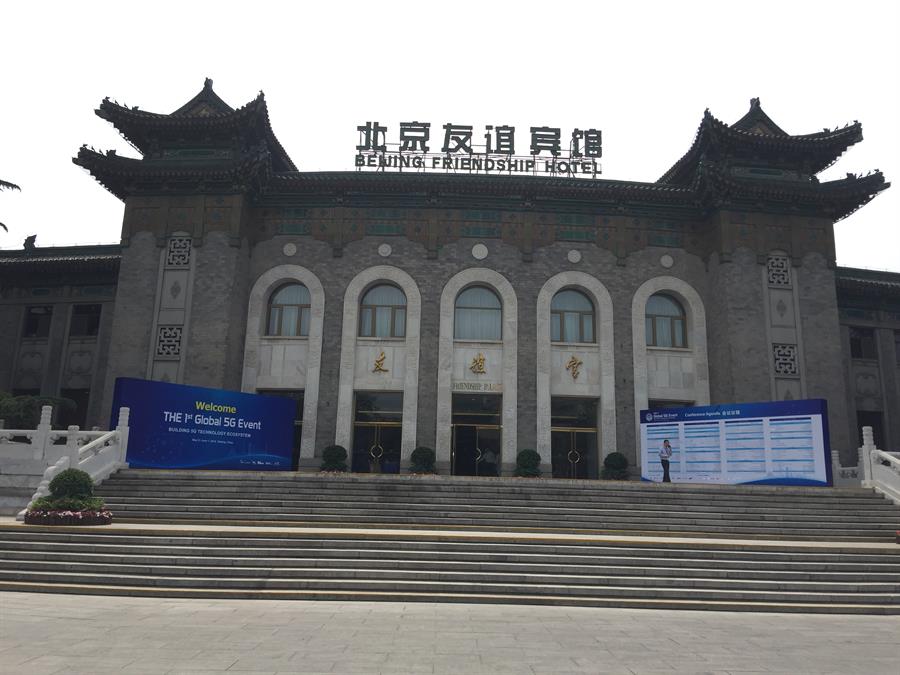The First Global 5G Event: Innovation, Collaboration and Joint trials
Being at the vanguard of 5G deployment is at the core of China’s development strategy. The government-supported IMT 2020 (5G) Promotion Group convened therefore in Beijing the four other main business groups promoting 5G – European 5G PPP, 5GMF from Japan, 5G Forum from Korea and 5G Americas – to take stock of the progress achieved and the challenges laying ahead. This first global 5G event brought more than 500 ICT specialists and industry representatives together in the Chinese capital from 31st May to 1st June.
Miao Wei, Minister of China’s Industry and Information Technology welcomed the participants stressing that the development of 5G has become a global strategic consensus.
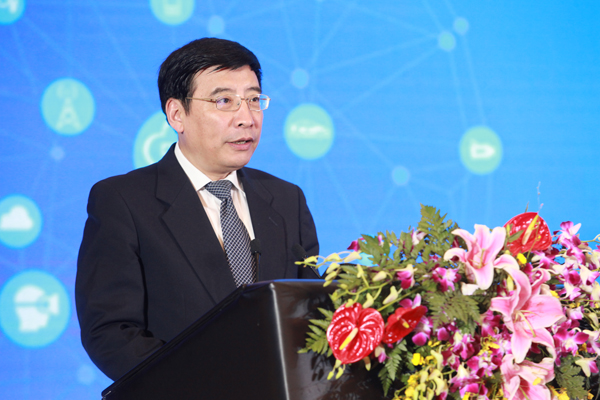 Miao Wei, Minister of China’s Industry and Information Technology (Source: MIIT)
Miao Wei, Minister of China’s Industry and Information Technology (Source: MIIT)
The emphasis put in China on 5G is not only driven by the global demand for ever faster wireless data networks or the ambition of achieving global digital leadership. The focus on 5G is also pushed by the fact that 4G has developed so rapidly in China that China is already confronted with the need to look for an upgrade that is able to cater for the future needs of the fast-pacing Chinese economic development.
Minister Miao explained that already today more than 500 million people in China use 4G, and China has the world’s largest 4G network with more than 4 million 4G base stations. Its mobile Internet users alone already consumed more than 4 million terabytes of data last year.
Minister Miao said that Made in China 2025, the ten-year national plan unveiled last year, which was designed to transform China from a manufacturing giant into a new innovation power, has set a detailed deployment for a comprehensive breakthrough on 5G technologies. The newly announced China’s 13th Five-Year Plan also indicated clearly that the country will push forward the development of 5G in the next five years and realize 5G commercialization by 2020.
Miao emphasized four aspects in deepening 5G innovation, cooperation and development.
- Accelerating R&D process: intensify R&D on 5G technology, 5G standards and 5G applications, and establish internationalized 5G platforms.
- Strengthening the spectrum planning: rely on ITU – the United Nations specialized agency for information and communication technologies – to forge better communication and coordination between countries and thus to create more unified frequency bands on 5G.
- Deepening international collaboration: build intensified exchange and wide cooperation system, and boost the development of a unified 5G standard under international frameworks such as ITU and 3GPP.
- Promoting convergence of 5G with the vertical industry, especially on innovation and R&D: focus on key areas such as Industrial Internet and Internet of Vehicles as breakthroughs, and create a safe and extensive 5G network that supports the sound development of the industry.
Werner Mohr, Chairman of the European industrial association 5G PPP, stressed that “International cooperation is very important and thus MoUs with counterparts in China, Japan and Korea are crucial. Building consensus in the preparation of future standards is extremely important.”
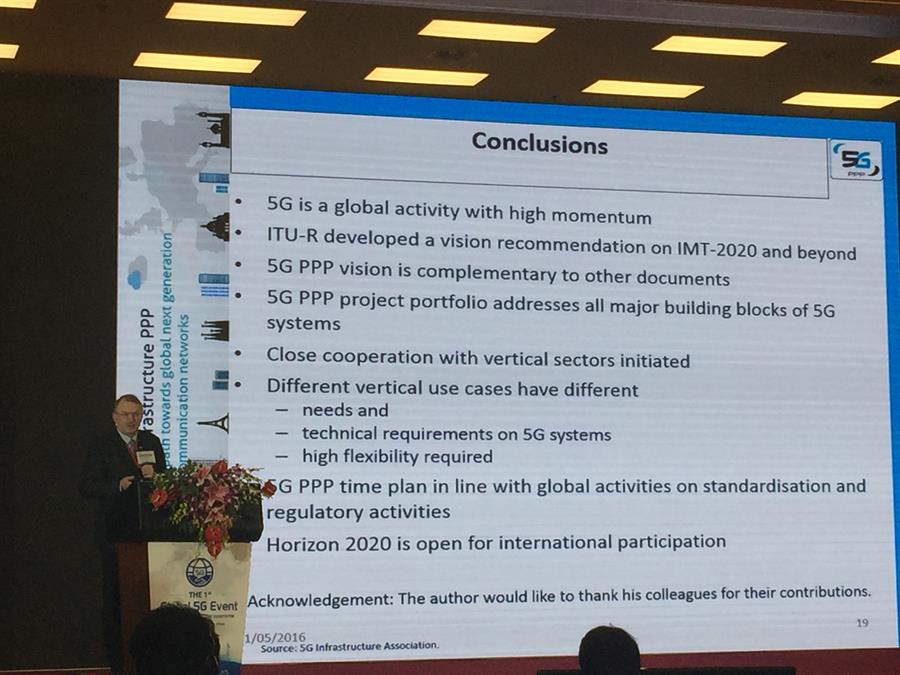 Werner Mohr, Chairman of 5G PPP
Werner Mohr, Chairman of 5G PPP
Mohr pointed out three major pillars, which will facilitate 5G global collaboration, namely enhancement of global broadband, ultra-reliable connection with low latency, as well as massive machine-type communications, or machine-to-machine (M2M) communications.
Cao Shumin, Chair of IMT-2020, said that high frequency spectrum (above 6Ghz) is of high importance for the development of 5G. However, China will implement the first R&D trials with 3.4-3.6GHz technology. The initial 5G commercial networks will also be developed at lower frequency.
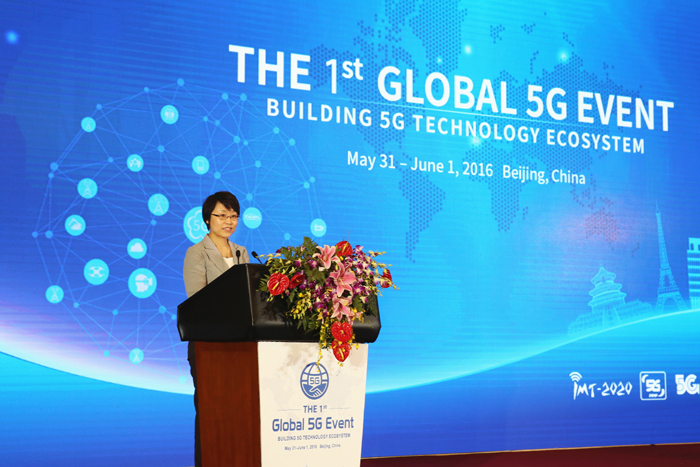 Cao Shumin, Chair of IMT-2020 (Source: MIIT)
Cao Shumin, Chair of IMT-2020 (Source: MIIT)
“A globally unified 5G standard in the framework of ITU and 3GPP has been a global consensus,” said Cao.
“Both enhanced mobile broadband and Internet of Things are the essential application fields of 5G and should be studied with the same priority. To turn 5G vision into reality, 5G standard requires innovative technologies, especially in system design, key technologies, and network architecture. 5G trial plays an important role in the R&D of 5G. It is very important to build 5G trial in an open and collaborative way.”
“All companies registered in China are welcome to apply to participate in the China research project,” she added.
As a leading international ICT player as well as one of the core members of IMT-2020, ZTE has been actively involved in 5G projects conducted by 3rd Generation Partnership Project (3GPP), Next Generation Mobile Networks (NGMN) Alliance, Institute of Electrical and Electronics Engineers (IEEE), ITU and other organizations for 5G standard, taking lead in over 30% of the research subjects.
Xiang Jiying, Chief Scientist of ZTE, demonstrated that China is leading in the global 5G race, sharing its revolutionary views to his peers. The fact that the First Global 5G Event was held in Beijing itself represented a global recognition of the cutting edge role China plays in the development of 5G.
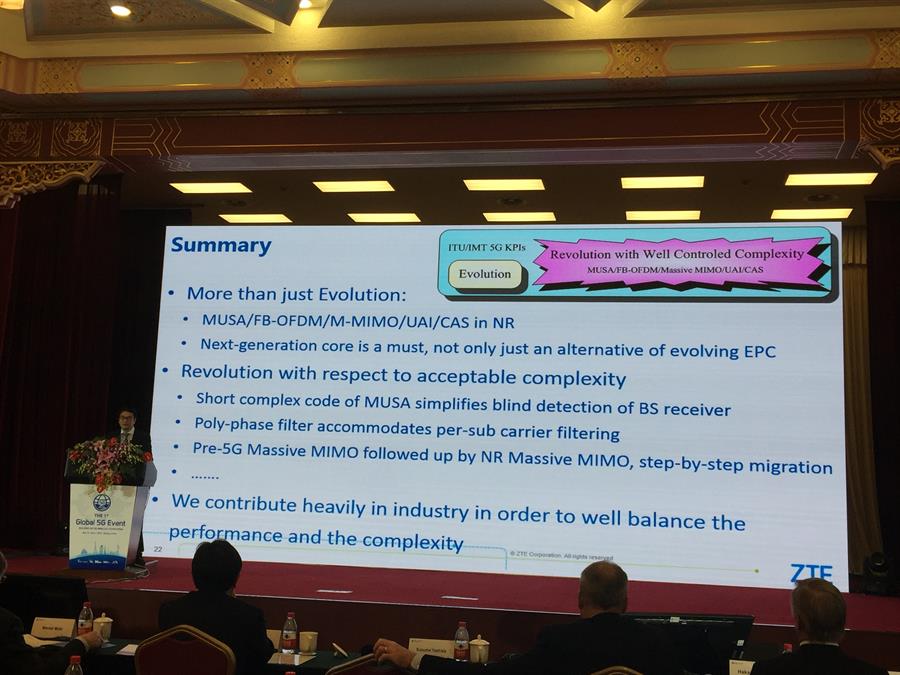 Xiang Jiying, Chief Scientist of ZTE
Xiang Jiying, Chief Scientist of ZTE
ZTE R&D covers a wide range of 5G aspects, such as Network Architecture design, Multi-antenna technology, High Frequency (HF) communications, IoT, Massive MIMO and Virtual Cell.
“ZTE is a practical innovator, already now we take into consideration the problems we might face years later to guarantee a high performance of the new technology and avoid at the same time the complexity that prevents the new technology from being commercialized.”
According to Xiang, ZTE’s Pre-5G technology, commercialized on a small-scale last year, plays a vital role in the development of 5G. Starting from 2016, ZTE will allocate 10 commercial pre-5G networks worldwide.
He unveiled that ZTE is planning to invest more than 2 billion RMB on 5G between 2016 and 2018. More than 2000 specialists are working on ZTE 5G R&D projects in research institutions across China, Japan, America and Europe.
Another leading Chinese ICT enterprise attending the Global 5G Event was Datang Telecom Technology & Industry Group. Datang developed the TD-SCDMA International 3G standard and has since then been a market leader in promoting the adoption of the technology, notably by China Telecom. Datang has then developed the TD-LTE (the evolution of TD-SCDMA) technology, and its proposal of TD-LTE Advanced technology has been incorporated into the 4G International standard by ITU-T.
It is worth noting that Datang holds a TD-LTE license in Belgium, which could in particular provide services to Chinese visitors in the capital of the EU while promoting TD-LTE in Europe.
Innovative high-tech and ICT companies are not the only superstars in the future, as traditional industries are also trying to catch up in the coming 5G era by incorporating Internet with their business. Volvo, for example, expressed its engagement in promoting autonomous driving during the event.
It is acknowledged that Volvo cars always put safety at first place. “No one should be killed or seriously injured in a new Volvo car by 2020” becomes the automobile giant’s ambitious target. And in order to achieve this ambition, autonomous driving is key.
Volvo believes that connected cars and autonomous driving are the future of the automotive industry, possibly with an extra help from real time-updated 3D digital maps. High bandwidth wireless communication remains essential to this vision and the future wireless should consist of the following features: high reliability (99.99%), high security, low latency, high positioning accuracy and robust connectivity despite high mobility.
Given its potential for specific and lucrative cooperation projects between European and Chinese companies, 5G has always been a priority for ChinaEU.
China and the EU share a similar vision on 5G as a revolutionary technology. China is attaching more importance to digital growth under frameworks such as “Internet Plus” and the national Big Data Strategy, seeing digital as springboard to the country’s development. Meanwhile, the EU intends to use the Digital Single Market strategy to revive the European economy and allow the EU to regain its competitiveness in the global market. This is where concrete cooperation opportunities can be found.
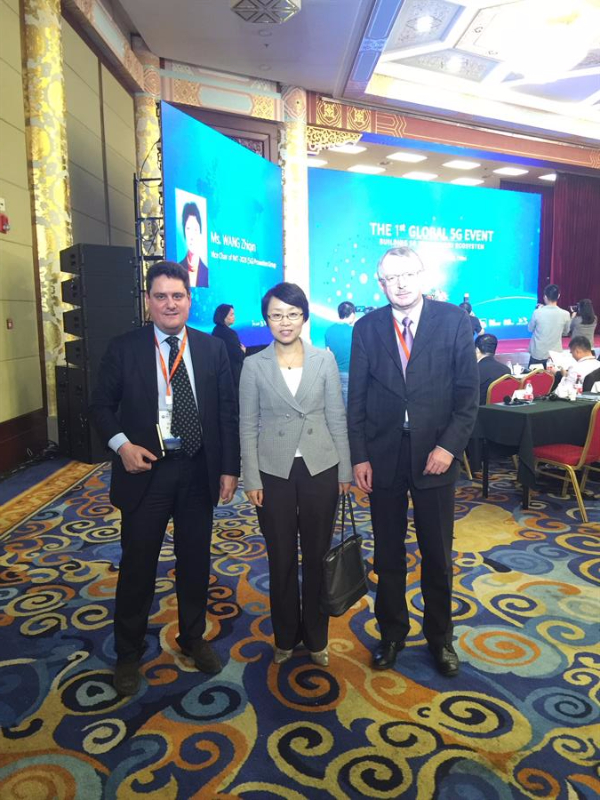 Luigi Gambardella, President of ChinaEU, with Cao Shumin, Chair of IMT-2020 and Werner Mohr, Chairman of 5G PPP
Luigi Gambardella, President of ChinaEU, with Cao Shumin, Chair of IMT-2020 and Werner Mohr, Chairman of 5G PPP
ChinaEU hence proposes to launch joint trials and joint flagship initiatives between Europe and China on 5G matters. For instance, the industry in China and in Europe could combine each other’s advantages, draw on each other’s experience, and work together on the development of a selection of 5G flagship cities in both regions.
As Werner Mohr pointed out, 5G is an international activity, with standardization activities going on in different regions. Harmonizing the effort globally to develop a common standard and thus facilitate the progress of global 5G development is in everyone’s interest.
To do so, IMT 2020 (5G) Promotion Group, 5G PPP, 5GMF, 5G Forum and 5G Americas have agreed that they will now meet every six months to reach the common development of 5G.
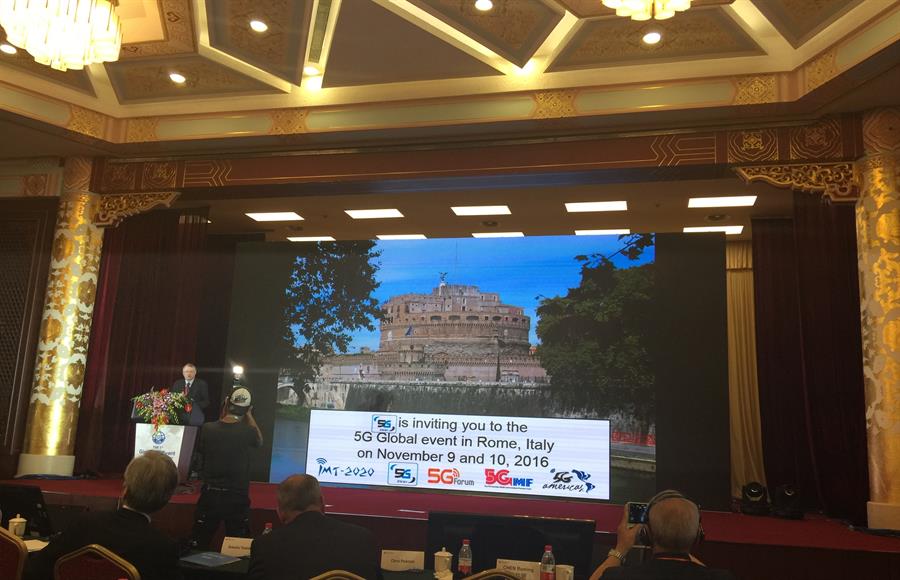 Werner Mohr, Chairman of 5G PPP concluding the event
Werner Mohr, Chairman of 5G PPP concluding the event
The next Global 5G Event will take place later this year in Rome, on 9th and 10th November.

